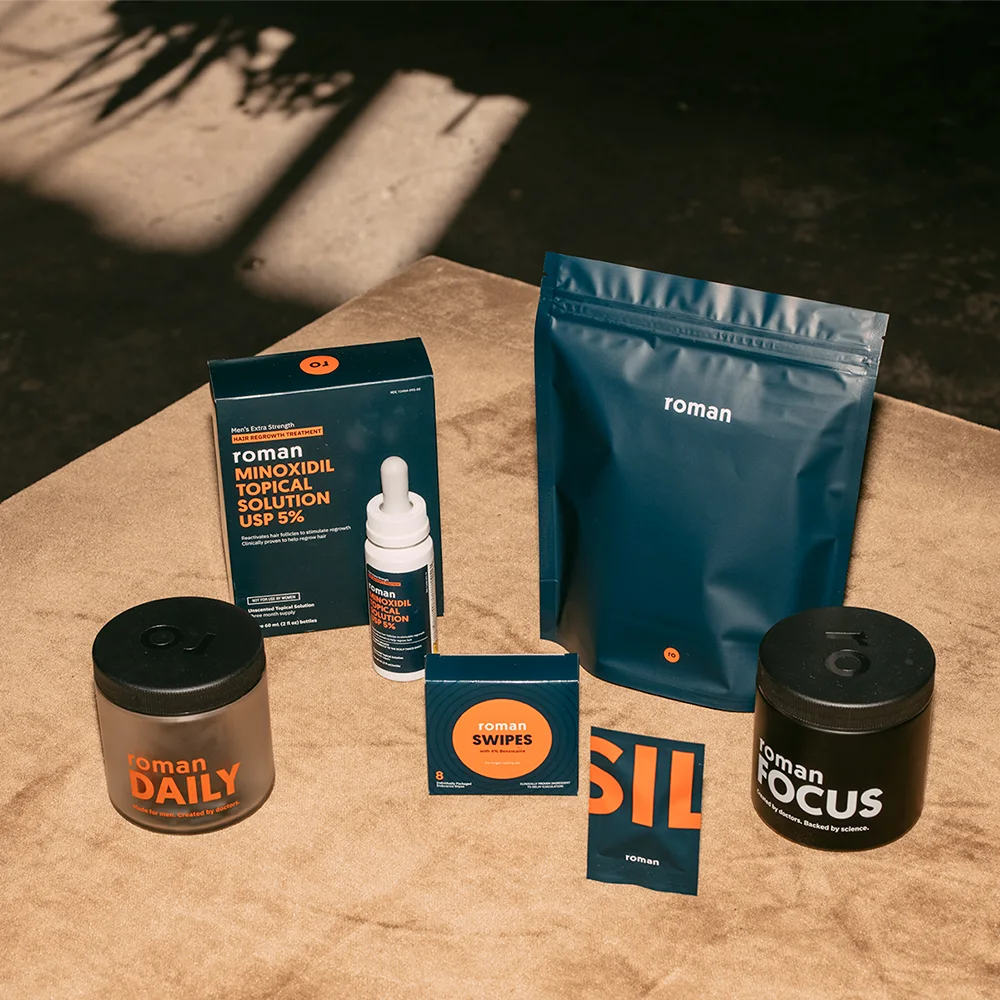Here's what we'll cover
Here's what we'll cover
If you are considering taking performance-enhancing drugs (PEDs) like anabolic steroids, or you are in the middle of a cycle, you need to know what’s involved in recovering normal function after stopping these drugs. Some men follow post cycle therapy (PCT), a protocol for bringing testosterone levels back to normal through medications like Clomid (clomiphene) and others. Read on as we explore how Clomid works.
What is Clomid?
Clomid (clomiphene citrate) is a selective estrogen receptor modulator (SERM) primarily prescribed to treat infertility in men and women by stimulating either sperm production or ovulation. Clomid is usually prescribed to people with certain health conditions, such as women with polycystic ovarian syndrome (PCOS) or some forms of amenorrhea (when someone’s menstrual period stops). Clomid helps these people get pregnant by triggering the production of sex hormones, including follicle stimulating hormone (FSH) and luteinizing hormone (LH) (Mbi Feh, 2022; Delu, 2020).
For men, Clomid may be prescribed off-label to treat secondary hypogonadism, a condition that can develop from extended steroid use. In secondary hypogonadism, the brain fails to tell the testes to produce sex hormones like testosterone (Sizar, 2022). Because Clomid increases serum testosterone levels (the amount of testosterone in the blood), this fertility treatment is gaining popularity among bodybuilders and others interested in PCT (Mbi Feh, 2022; de Ronde, 2020).
What is PCT (post cycle therapy)?
Post cycle therapy, or PCT, is a protocol you follow after (or “post”) completing a cycle of anabolic steroids, a type of performance-enhancing drug (PED). While some PEDs can offer benefits such as muscle growth, they may also wreak havoc on other aspects of your physical health — especially your testosterone levels. When you take anabolic steroids, the drugs provide a heavy dose of testosterone. As a result, when you finish your cycle, your body experiences a sudden drop in testosterone (Pereira, 2019).
While your body will naturally restart testosterone production, it can take months to years to return to normal hormonal levels (McBride, 2016; AlShareef, 2022). In the meantime, you may experience the effects of low testosterone, like decreased energy and libido, reduced muscle mass, and depression. Post cycle therapy can help speed this process up, safely giving your body a boost as it increases testosterone production (Pereira, 2019; Delu, 2020).
Some researchers acknowledge that the efficacy of PCT is still unproven, as are many of the practices surrounding steroid use (de Ronde, 2020).
Clomid for PCT
When you stop using anabolic steroids, estrogen levels rise while testosterone lowers, as your body recalibrates its hormone levels. Selective estrogen receptor modulators (SERMs) like Clomid can counteract this effect by regulating estrogen levels and enabling testosterone to rise (Mbi Feh, 2022). Clomid (clomiphene) also promotes the release of follicle stimulating hormone (FSH) and luteinizing hormone (LH), which help raise testosterone levels (Dadhich, 2017).
Clomid comes in a 50 mg oral tablet. Common side effects of clomiphene for men include (Mbi Feh, 2022; DailyMed, 2022):
Blurred vision or blind spots
Breast pain or tenderness
Dizziness
Flushing or hot flashes
Gynecomastia (enlarged male breast tissue)
Headache
Hypertriglyceridemia (high triglycerides)
Mood swings
Nausea
Pelvic pain
Testicular tumor
Upset stomach
Vomiting
Clomid is a prescription drug that can have serious side effects if not used as directed. However, studies have found that even with long-term use, Clomid safely and effectively treats hypogonadism in men with few side effects (Krzastek, 2019).
Other post cycle therapy options
Other options for normalizing hormones after anabolic steroid use include testosterone boosters, PCT supplements, Nolvadex (tamoxifen), and human chorionic gonadotropin (hCG).
Some PCT protocols can be purchased over-the-counter as supplements, and may be taken for a period of weeks. Others, like Clomid and Nolvadex (tamoxifen), are prescription drugs that are FDA-approved for other conditions, but may be used off-label for PCT.
Clomid and Nolvadex are both SERMs. As estrogen blockers, SERMs increase levels of testosterone and can offset some of the negative effects men experience after a steroid cycle, such as gynecomastia (Farrar, 2022; de Ronde, 2020). In fact, some men will use clomiphene and tamoxifen together during PCT (Bonnecaze, 2021).
Nolvadex (tamoxifen) is primarily prescribed to treat breast cancer in women and men, but it may be used off-label for various conditions, including infertility, gynecomastia, and several cancers (Farrar, 2022).
The best time to start a PCT protocol depends on your personal medical history, the length of your anabolic steroid cycle, and the dosage you were taking. It is best to consult a healthcare professional for guidance. Also, while SERMs like Clomid and Nolvadex do not appear to have serious negative side effects on male sexual function, their safety and long-term effects as a PCT protocol are still unknown (de Ronde, 2020). In some men, normal erectile function and libido may not return after steroid use, even when testosterone levels return to normal (Kanayama, 2015).
Regardless of which PCT protocol you use, you can make post cycle therapy more comfortable and successful by focusing on your rest, nutrition, and training. Eat a balanced diet, get enough sleep, and maintain a healthy workout routine to help your body recalibrate more easily.
DISCLAIMER
If you have any medical questions or concerns, please talk to your healthcare provider. The articles on Health Guide are underpinned by peer-reviewed research and information drawn from medical societies and governmental agencies. However, they are not a substitute for professional medical advice, diagnosis, or treatment.
AlShareef, S., Gokarakonda, S. B., & Marwaha, R. (2022). Anabolic steroid use disorder. StatPearls . Retrieved on Sept. 7, 2022 from https://www.ncbi.nlm.nih.gov/books/NBK538174/
Bonnecaze, A. K., O'Connor, T., & Burns, C. A. (2021). Harm reduction in male patients actively using anabolic androgenic steroids (AAS) and performance-enhancing drugs (PEDs): A review. Journal of General Internal Medicine, 36 (7), 2055–2064. doi:10.1007/s11606-021-06751-3. Retrieved from https://pubmed.ncbi.nlm.nih.gov/33948794/
Dadhich, P., Ramasamy, R., Scovell, J., et al. (2017). Testosterone versus clomiphene citrate in managing symptoms of hypogonadism in men. Indian Journal of Urology, 33 (3), 236–240. doi:10.4103/iju.IJU_372_16. Retrieved from https://pubmed.ncbi.nlm.nih.gov/28717276/
DailyMed. (2022). CLOMID- clomiphene citrate tablet. National Library of Medicine . Retrieved from https://dailymed.nlm.nih.gov/dailymed/drugInfo.cfm?setid=2ca373c1-4dba-4126-8616-5c533d606fe5
de Ronde, W. & Smit, D. L. (2020). Anabolic androgenic steroid abuse in young males. Endocrine Connections, 9 (4), R102–R111. doi:10.1530/EC-19-0557. Retrieved from https://pubmed.ncbi.nlm.nih.gov/32229704/
Delu, A., Kiltz, R. J., Kuznetsov, V. A., & Trussell, J. C. (2020). Clomiphene citrate improved testosterone and sperm concentration in hypogonadal males. Systems Biology in Reproductive Medicine, 66 (6), 364–369. doi:10.1080/19396368.2020.1822457. Retrieved from https://pubmed.ncbi.nlm.nih.gov/33043679/
DiGiorgio, L. & Sadeghi-Nejad, H. (2016). Off label therapies for testosterone replacement. Translational Andrology and Urology, 5 (6), 844–849. doi:10.21037/tau.2016.08.15. Retrieved from https://pubmed.ncbi.nlm.nih.gov/28078215/
El Osta, R., Almont, T., Diligent, C., et al. (2016). Anabolic steroids abuse and male infertility. Basic and Clinical Andrology, 26 , 2. doi:10.1186/s12610-016-0029-4. Retrieved from https://pubmed.ncbi.nlm.nih.gov/26855782/
Farrar, M. C. & Jacobs, T. F. (2022). Tamoxifen. StatPearls . Retrieved on Sept. 7, 2022 from https://www.ncbi.nlm.nih.gov/books/NBK532905/
Kanayama, G., Hudson, J. I., DeLuca, J., et al. (2015). Prolonged hypogonadism in males following withdrawal from anabolic-androgenic steroids: an under-recognized problem. Addiction (Abingdon, England), 110 (5), 823–831. doi:10.1111/add.12850. Retrieved from https://pubmed.ncbi.nlm.nih.gov/25598171/
Krzastek, S. C., Sharma, D., Abdullah, N., et al. (2019). Long-term safety and efficacy of clomiphene citrate for the treatment of hypogonadism. The Journal of Urology, 202 (5), 1029–1035. doi:10.1097/JU.0000000000000396. Retrieved from https://pubmed.ncbi.nlm.nih.gov/31216250/
Mbi Feh, M. K. & Wadhwa, R. (2022). Clomiphene. StatPearls . Retrieved on Sept. 7, 2022 from https://www.ncbi.nlm.nih.gov/books/NBK559292/
McBride, J. A. & Coward, R. M. (2016). Recovery of spermatogenesis following testosterone replacement therapy or anabolic-androgenic steroid use. Asian Journal of Andrology, 18 (3), 373–380. doi:10.4103/1008-682X.173938. Retrieved from https://pubmed.ncbi.nlm.nih.gov/26908067/
Pereira, E., Moyses, S. J., Ignácio, S. A., et al. (2019). Anabolic steroids among resistance training practitioners. PloS One, 14 (10), e0223384. doi:10.1371/journal.pone.0223384. Retrieved from https://pubmed.ncbi.nlm.nih.gov/31618245/
Sizar, O. & Schwartz, J. (2022). Hypogonadism. StatPearls . Retrieved on Sept. 7, 2022 from https://www.ncbi.nlm.nih.gov/books/NBK532933/










